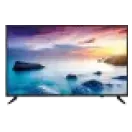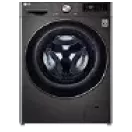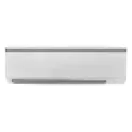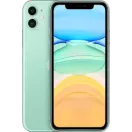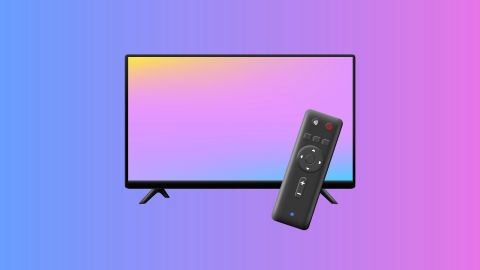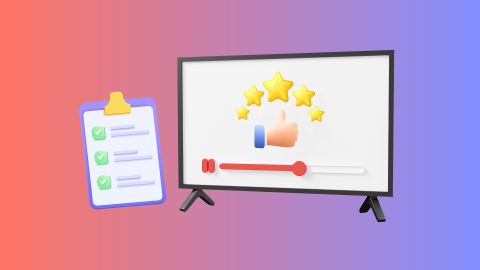Satellite TV connections deliver a wide range of channels directly to your television using a dish and receiver system. The two most common types are Direct-to-Home (DTH) and Free-to-Air (FTA) connections. DTH services offer subscription-based plans with high-definition content, interactive services, and regional channel packs. FTA services provide access to basic channels without a monthly fee but offer limited content variety. Some advanced
TVs come with built-in satellite tuners, allowing users to connect directly without external set-top boxes.
Setting up a satellite dish to TV via set-top box
Connecting your TV to a satellite dish using a set-top box allows you to enjoy a wide range of live channels in high quality. Whether you are using DTH or another satellite service, the setup process is straightforward.
Here is a step-by-step guide to help you get started.
- Install the dish: Place the satellite dish in an open area with a clear view of the sky, ideally on a terrace or outer wall.
- Connect the dish to the set-top box: Use a coaxial cable to link the dish’s LNB output to the ‘Satellite In’ port on the set-top box.
- Connect the set-top box to your TV: Use an HDMI or AV cable to connect the set-top box to the TV’s input port.
- Power on all devices: Turn on your TV and set-top box, and select the correct input source using the TV remote.
- Configure the setup: Follow on-screen prompts to scan for channels and save them for regular viewing.
- Adjust for better signal: If the signal is weak, slightly move the dish to find the best signal strength.
With this setup, you can enjoy uninterrupted access to hundreds of satellite TV channels. Pairing a set-top box with a compatible smart TV gives you the best of both worlds—traditional live TV and modern OTT entertainment, all in one place.
For a more immersive experience, you can upgrade to a
40-inch smart TV that offers seamless compatibility with set-top boxes and streaming platforms.
Using HDMI or AV cables for connection
HDMI and AV cables are commonly used to connect set-top boxes, gaming consoles, and other external devices to your television. HDMI cables provide high-definition audio and video signals through a single cable, while AV cables (composite or component) transmit analogue signals using multiple connectors. Most modern TVs support both options, but HDMI is the preferred choice for better picture and sound quality.
These TVs often come with 2 or more HDMI slots and offer better AV support as well, making connectivity simple and flexible.
Below is a comparison of HDMI and AV cables:
| Feature | HDMI cable | AV cable |
| Signal quality | Digital – high-definition | Analogue – standard definition |
| Number of cables | Single cable | Three (video + two audio) |
| Audio support | Surround sound and advanced audio | Basic stereo audio |
| Compatibility | Newer TVs and devices | Older TVs and media devices |
| Setup simplicity | Simple and clean | Slightly cluttered due to multiple wires |
Using the right cable ensures you get the most out of your entertainment system, whether it is for streaming, gaming, or watching satellite TV.
If you plan to enjoy high-definition content, upgrading to a
50-inch LED TV from Bajaj can give you improved compatibility, clearer visuals, and support for multiple input ports.
Aligning your satellite dish for signal reception
Proper alignment of your satellite dish is essential for uninterrupted TV viewing. A poorly positioned dish can result in signal loss, pixelated visuals, or complete blackout of channels. To begin, place the dish in an open area with no obstructions like trees or buildings. Adjust the elevation and azimuth angle based on your service provider’s instructions to ensure the dish points in the right direction.
Modern smart TVs make it easier to detect signal strength during setup. If you are using an
Android TV, the built-in interface may provide signal bars and quality indicators to guide adjustments. Slowly move the dish and monitor the signal meter to lock the best position. Once aligned, tighten the bolts to hold the dish in place. This simple step can significantly improve picture clarity and channel stability, ensuring a smooth viewing experience throughout the day.
Troubleshooting signal and connection issues
Signal and connection problems are common in satellite and set-top box setups, especially during bad weather or after shifting the device. Loss of signal, pixelated channels, or 'no input' errors on screen are clear signs of disruption. The first step in troubleshooting is to inspect all physical connections. Check if the HDMI or AV cables are properly plugged into both the TV and the set-top box. Also, make sure the power supply to both devices is stable.
If the issue persists, switch the TV to the correct input source using the remote. Sometimes, signal loss is due to minor dish misalignment or loose LNB cable connections. Inspect the satellite dish to ensure it is facing the right direction and is firmly mounted.
Software-related issues can also affect signal performance. Refresh the channel list or run an automatic scan from the set-top box menu. Restart both the TV and set-top box if needed. If you have an internet-enabled smart TV, ensure that software updates are not pending, as these may impact certain functions.
In some cases, weather conditions like heavy rain or storms may temporarily affect satellite signal strength. Wait for conditions to improve and recheck the connection. If the problem persists, please contact your DTH service provider for additional assistance. By following these steps, you can resolve most signal and connection issues at home without needing a technician, restoring smooth viewing with minimal delay.
For better compatibility and ease of access to inputs, consider a
32-inch LED TV, which often comes with multiple ports and a user-friendly interface for managing connections.
If you are planning to buy a new TV, explore the
latest offers. You may find a great deal on a model that matches your needs.
Visit your nearest Bajaj Finserv partner store to browse through a wide selection of products. Choose a product that suits your preferences and meets your specific needs. Convert the total cost into Easy EMIs and enjoy a repayment period of up to 60 months. Bajaj Finserv offers this flexible financing option on over 1 million products.
Explore TVs and Phones on Easy EMI from Bajaj Finserv
Find the best TVs and smartphones to match your lifestyle, now available on Bajaj Mall. From big-screen TVs for family entertainment to feature-rich phones for everyday use, there are many options to explore. Enjoy clear visuals, strong sound, and smart features. Once you pick what you need, check your pre-approved loan limit online or at the store, give your basic details, and pay in Easy EMIs.
Benefits of shopping with Bajaj Finserv’s financing options
- Affordable pricing: Find great prices on TVs and phones at Bajaj Finserv partner stores, ensuring a cost-effective purchase without compromising on quality.
- Easy EMIs: Bajaj Finserv simplifies buying your TV and phone with flexible payment plans through Easy EMIs, giving you the freedom to manage your budget.
- Zero down payment: No upfront payment needed. Selected TV and phone models come with a zero down payment option so you can pay comfortably over time.
- Wide range and accessibility: Choose from a wide selection of TVs and phones at Bajaj Finserv partner stores to find the perfect models for your needs.
- Free home delivery available: Benefit from free home delivery on select TV and phone models for a hassle-free shopping experience.
